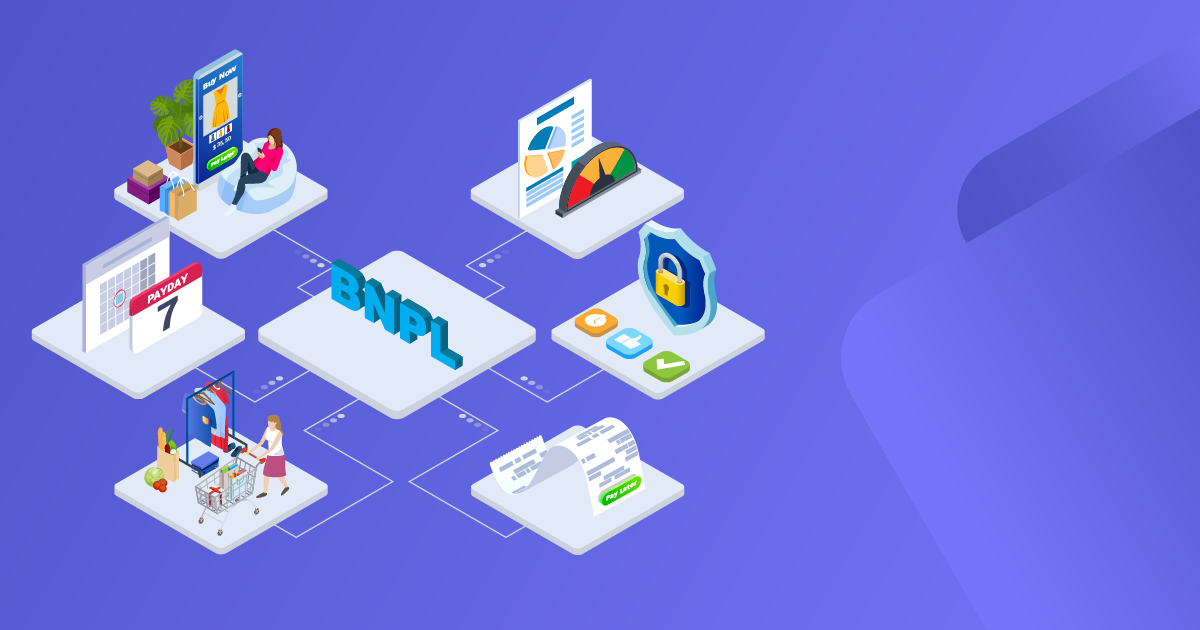

In this evolving landscape of commerce and financial services, businesses are relentlessly introducing competitive services to remain agile, drive growth, and enhance the customer experience journey. The modern Buy Now Pay Later (BNPL) innovation has disrupted the retail world. The convenience and flexibility it offers, with relatively relaxed prerequisites to onboard, created a perfect recipe for a lucrative service that immediately caught adoption through various segments.
This article briefly discusses the perks and pitfalls of BNPL amongst the whole spectrum of service providers, merchants and end-users.
The Perks of BNPL
Historically, traditional banking systems have been increasingly challenged by fintech and PSPs, which offer appealing financial services with fewer restrictions and easy-to-market services. Such is the case when it comes to BNPL, as no one is sparing efforts to provide it as the new must-have service. It has become necessary to adapt to and adopt new trends, as they are becoming crucial aspects affecting customer preference.
Distinguishing BNPL From Traditional Credit
End users are generally aware of credit card benefits and the relaxed pay-back models they offer, usually handled through traditional banking bodies. The first argument that comes to mind when discussing BNPL is its difference or added value for relatively saturated credit cards. What could be the selling point for the bank, PSP, and customers to opt for this service instead?
In some sense, the essence of BNPL has roots in installment plans similar to credit cards, which aim to increase users' purchasing power. Yet, obtaining a credit card might be challenging due to the extensive prerequisites, associated fees, complex terms and conditions, and more. However, the modern BNPL industry has surged in popularity over the past few years, driven by the rise of e-commerce and changing consumer preferences. Not to mention the dependency on e-commerce and the accelerated growth that the COVID pandemic had on digital services.
BNPL providers are now integrating with online shops' checkouts to seamlessly embed the service upon purchase, with some being so easy that onboarding is done simultaneously with the purchase.
Why BNPL Appeals to Modern Consumers
Nowadays, stores and online shops are racing to offer this service, as it appeals mainly to younger consumers who prefer straightforward payment plans. The models of embedding this service come in different flavors, as some PSPs offer this service to customers depending on the transaction amount. In contrast, others provide it within closed loops to give exclusive advantages. Some main BNPL PSPs are entering the market, focusing on serving unbanked customers and partnering with ecommerce giants like Amazon.
Revolutionizing Shopping with BNPL
This financial service embedded at the point of checkout allows consumers to purchase products or services on the spot and pay in more comfortable payment terms over an agreed period, revolutionizing how people shop and businesses operate, and generating growth. Not only are the customers reaping the benefits of BNPL, but companies and BNPL Payment Service Providers (PSPs) have also unlocked new growth opportunities. They are empowered to better serve and retain customers within this controlled ecosystem.
Enhancing Retailers' Experience
For multiple reasons, merchants offering BNPL purchases to their customers have been significantly empowered. First and foremost, having BNPL allows customers to purchase higher-priced items, making them more accessible to a more significant segment. This increase in purchasing power allows more frequent purchases and, therefore, higher turnover volume for the business, thus generating higher revenues.
Studies show that BNPL has significantly increased the Average Order Value (AOV). This convenience boosts customer satisfaction and reduces cart abandonment rates, a common challenge in e-commerce. BNPL has reached a stage in which dependency on it can affect customers' buying decisions, with one study showing that 40% of BNPL users are likely to abandon their cart if BNPL options are unavailable.
Expanding Customer Base and Building Loyalty
This payment solution caters to growing demand and expands customer bases by building loyalty. Offering BNPL attracts a broader range of customers without access to traditional credit cards, helping retailers tap into new segments and drive growth. The convenience and transparency also boost customer satisfaction and encourage repeat purchases. Customers were found to prefer retailers offering BNPL and are more likely to shop where BNPL is available.
Enhancing Service Provider Offerings
PSPs are actively embedding BNPL in their portfolio of services to offer their customers. BNPL PSPs range from traditional banks who are offering this service to their existing customers, regulated fintechs, closed-loop stores, and more. Revenue generation varies widely from one model to another. For instance, some might offer an interest rate or a fixed fee to utilize BNPL service.
Other models offer 0% interest and the original item price for customers. However, back-to-back agreements take place with the merchant for discounted bulk prices for the PSP. Another vital stream includes marketing ads and other streams, such as late payment fees, subscription fees, and more.
Global Growth and Economic Impact
Integrating BNPL in commerce has further spread awareness and demonstrated the capability and ease of utilizing such services. It is strongly evident in the global volume of BNPL, in which the BNPL market was valued at around $132 billion in 2023, with projections of tripling the number of users by 2027 and ultimately expected to grow to a staggering $3.68 trillion by 2030.
The Pitfalls of BNPL
Regulatory Considerations and Reliable Providers
Despite these advantages, there are certainly considerations that need to be taken. A reliable BNPL service provider with a dynamic and agile solution is a crucial factor in having a successful model with minimal hurdles. Moreover, regulators are laying down the regulations and rule books for managing BNPL service providers and acquiring the operating license. It is crucial on both macro and micro levels to have an efficiently operating service so that the whole community can reap its benefits, with some limitations to control and mitigate risks of financial defaults.
Financial Awareness and Consumer Responsibility
One primary concern for customers is the potential financial risk and high appetite for BNPL purchases, which can accumulate the total monthly debt amount. Customers need to be financially aware of their decisions and consider related terms when purchasing BNPL. Some BNPL PSPs mitigate risks by limiting total BNPL purchase caps and segmenting customers into tiers based on monthly income and credit scores.
Strategies for Maximizing Benefits
To capitalize on the advantages and avoid challenges, PSPs should seek constant expansion and leverage fertile markets and segments for a head start. Targeting tech-savvy social classes needing such services ensures better market acquisition and higher realized revenue. Continuous improvement is crucial; for instance, introducing Artificial Intelligence (AI) early could provide significant advantages. AI might suggest credit offers to customers or study customer behavior and income to select suitable BNPL plans.
Moreover, BNPL services integrated with advanced data analytics provide:
- Valuable insights into consumer behavior
- It allows for tailored strategies and product offerings to meet customer needs better
- Further driving sales and loyalty
Conclusion
BNPL is not just a payment option anymore; it is a powerful tool transforming the financial landscape by empowering customers and driving business growth. Its rapid adoption across various platforms indicates its potential to soar to new heights. For PSPs, BNPL is a strategic addition to their portfolios, increasing business and revenue. Merchants benefit from higher turnover and sales, making their products accessible to a larger population. End users take advantage of this tool to access higher-value goods.
While BNPL offers numerous benefits, it must be regulated and managed carefully to minimize financial risks and ensure responsible use. The role of regulators and PSPs in defining rules to mitigate risks is crucial. With better understanding, experience, and advanced technologies like AI and data analytics, BNPL offerings could become the new norm in commerce.






